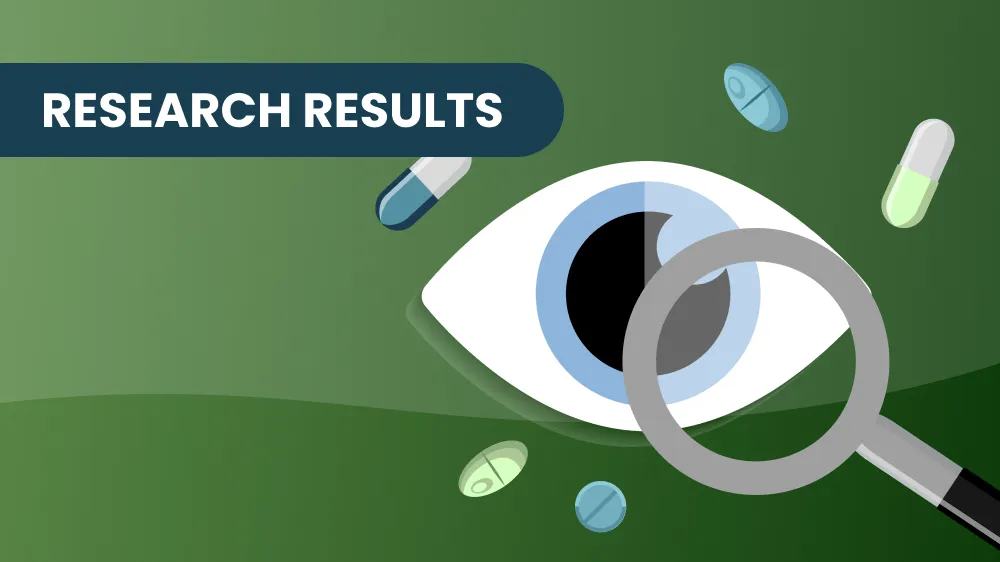HealthTree Research Results: Myeloma Eye Health and Dexamethasone

Dexamethasone use is highly correlated to eye health and the development of cataracts, according to HealthTree research about dexamethasone’s impact on eye health for people with multiple myeloma. This study was led by Rahul Banerjee, MD, and Andrew J. Cowan, MD, from Fred Hutchinson Cancer Center.
We're deeply grateful to everyone who helped identify this practice-changing discovery. Your participation in HealthTree Cure Hub is making a meaningful impact on advancing myeloma research.
Dr. Banerjee, Dr. Cowan, and Team’s Findings
Dr. Banerjee was interviewed at the International Myeloma Society conference to share the results of the collaborative study with HealthTree. Watch the interview below or continue reading the article for the findings.
So, How Does Dexamethasone Impact Myeloma Patients’ Eye Health?
In this study conducted through HealthTree Cure Hub, 582 myeloma patients, averaging 65.9 years old, provided insights about their eye health. 50% of patients had received high doses of dexamethasone in the past, 12% had received low doses of dexamethasone, and 30% had not been treated with dexamethasone.
Through this study, Dr. Banerjee, Dr. Cowan, and their team discovered that dexamethasone exposure correlated with cataracts and other eye health issues.
Dexamethasone exposure and cataracts
- 63% of patients who had high-dose dexamethasone developed cataracts, where the lens of the eye becomes cloudy, leading to blurred vision.
- 53% of those on low-dose dexamethasone had cataracts.
- 51% of patients who never received dexamethasone also experienced cataracts.
Despite having cataracts, 43% of affected patients reported no impact on their daily activities, while 7% found it challenging to perform daily tasks.
Other Eye Health Findings
Glaucoma: There was no significant difference in the percentage of patients affected by glaucoma (a condition in which eye fluid buildup may lead to blindness) across the different groups (7-11%).
Dry eyes and other conditions: 39% of all patients experienced dry eyes. 23% had styes or blepharitis, an inflammation of the eyelids accompanied by itchy, red skin and dandruff-like flakes. Interestingly, this was reported by patients regardless of whether they had been treated with the myeloma treatment bortezomib (Velcade), which has been linked to blepharitis in the past.
Oncologist-recommended eye care: While 82% of patients visited an eye doctor at least once a year, only 32% recalled their oncologist recommending regular eye exams. This suggests a gap in the consistent endorsement of periodic eye examinations as part of supportive care for myeloma patients.
Conclusion
In summary, Drs. Banerjee and Cowan’s research shows that high doses of dexamethasone are linked to a greater risk of developing cataracts for myeloma patients. Dexamethasone may also increase your risk of developing blepharitis. It did not, however, increase patients’ risks of glaucoma.
If you have concerns about developing cataracts while taking high-dose dexamethasone, speak with your myeloma specialist about other treatment options.
Advance Myeloma Research Through HealthTree Cure Hub Surveys
To participate in myeloma research like the study above and improve patient outcomes, click the button below to access simple surveys in HealthTree Cure Hub.
Participate in Myeloma Surveys
Sources:
Dexamethasone use is highly correlated to eye health and the development of cataracts, according to HealthTree research about dexamethasone’s impact on eye health for people with multiple myeloma. This study was led by Rahul Banerjee, MD, and Andrew J. Cowan, MD, from Fred Hutchinson Cancer Center.
We're deeply grateful to everyone who helped identify this practice-changing discovery. Your participation in HealthTree Cure Hub is making a meaningful impact on advancing myeloma research.
Dr. Banerjee, Dr. Cowan, and Team’s Findings
Dr. Banerjee was interviewed at the International Myeloma Society conference to share the results of the collaborative study with HealthTree. Watch the interview below or continue reading the article for the findings.
So, How Does Dexamethasone Impact Myeloma Patients’ Eye Health?
In this study conducted through HealthTree Cure Hub, 582 myeloma patients, averaging 65.9 years old, provided insights about their eye health. 50% of patients had received high doses of dexamethasone in the past, 12% had received low doses of dexamethasone, and 30% had not been treated with dexamethasone.
Through this study, Dr. Banerjee, Dr. Cowan, and their team discovered that dexamethasone exposure correlated with cataracts and other eye health issues.
Dexamethasone exposure and cataracts
- 63% of patients who had high-dose dexamethasone developed cataracts, where the lens of the eye becomes cloudy, leading to blurred vision.
- 53% of those on low-dose dexamethasone had cataracts.
- 51% of patients who never received dexamethasone also experienced cataracts.
Despite having cataracts, 43% of affected patients reported no impact on their daily activities, while 7% found it challenging to perform daily tasks.
Other Eye Health Findings
Glaucoma: There was no significant difference in the percentage of patients affected by glaucoma (a condition in which eye fluid buildup may lead to blindness) across the different groups (7-11%).
Dry eyes and other conditions: 39% of all patients experienced dry eyes. 23% had styes or blepharitis, an inflammation of the eyelids accompanied by itchy, red skin and dandruff-like flakes. Interestingly, this was reported by patients regardless of whether they had been treated with the myeloma treatment bortezomib (Velcade), which has been linked to blepharitis in the past.
Oncologist-recommended eye care: While 82% of patients visited an eye doctor at least once a year, only 32% recalled their oncologist recommending regular eye exams. This suggests a gap in the consistent endorsement of periodic eye examinations as part of supportive care for myeloma patients.
Conclusion
In summary, Drs. Banerjee and Cowan’s research shows that high doses of dexamethasone are linked to a greater risk of developing cataracts for myeloma patients. Dexamethasone may also increase your risk of developing blepharitis. It did not, however, increase patients’ risks of glaucoma.
If you have concerns about developing cataracts while taking high-dose dexamethasone, speak with your myeloma specialist about other treatment options.
Advance Myeloma Research Through HealthTree Cure Hub Surveys
To participate in myeloma research like the study above and improve patient outcomes, click the button below to access simple surveys in HealthTree Cure Hub.
Participate in Myeloma Surveys
Sources:

about the author
Megan Heaps
Megan joined HealthTree in 2022. She enjoys helping patients and their care partners understand the various aspects of the cancer. This understanding enables them to better advocate for themselves and improve their treatment outcomes.
More on HealthTree Research
Trending Articles
Get the Latest Blood Cancer Updates, Delivered to You.
By subscribing to the HealthTree newsletter, you'll receive the latest research, treatment updates, and expert insights to help you navigate your health.













